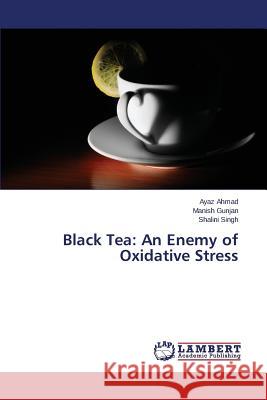Black Tea: An Enemy of Oxidative Stress » książka
Black Tea: An Enemy of Oxidative Stress
ISBN-13: 9783659741845 / Angielski / Miękka / 2015 / 140 str.
Tea (Camellia sinensis) is the second most consumed beverage around the world after water (Vinson, 2000). Tea, the most widely used beverage, is one of the richest sources of Polyphenol. Although it has been consumed for centuries, tea is currently touted as a beverage that can promote health and help prevent a number of diseases. Currently there is an increased realization that tea can be investigated for their beneficial effects on health. Tea can be categorized into three types: green (unfermented), oolong (partially fermented) and black (fermented) tea. Research till date has been focused mainly on green tea (GT), however less work has been done with black tea (BT) which accounts for 80% of the total tea consumption worldwide (Cheng 2006; Peterson et al., 2005). Cardiovascular disease is the number one cause of death globally. 17.5 million People have died from cardiovascular disease in 2005, representing 30 % of all global deaths.
Tea (Camellia sinensis) is the second most consumed beverage around the world after water (Vinson, 2000). Tea, the most widely used beverage, is one of the richest sources of Polyphenol. Although it has been consumed for centuries, tea is currently touted as a beverage that can promote health and help prevent a number of diseases. Currently there is an increased realization that tea can be investigated for their beneficial effects on health. Tea can be categorized into three types: green (unfermented), oolong (partially fermented) and black (fermented) tea. Research till date has been focused mainly on green tea (GT), however less work has been done with black tea (BT) which accounts for 80% of the total tea consumption worldwide (Cheng 2006; Peterson et al., 2005). Cardiovascular disease is the number one cause of death globally. 17.5 million People have died from cardiovascular disease in 2005, representing 30 % of all global deaths.











